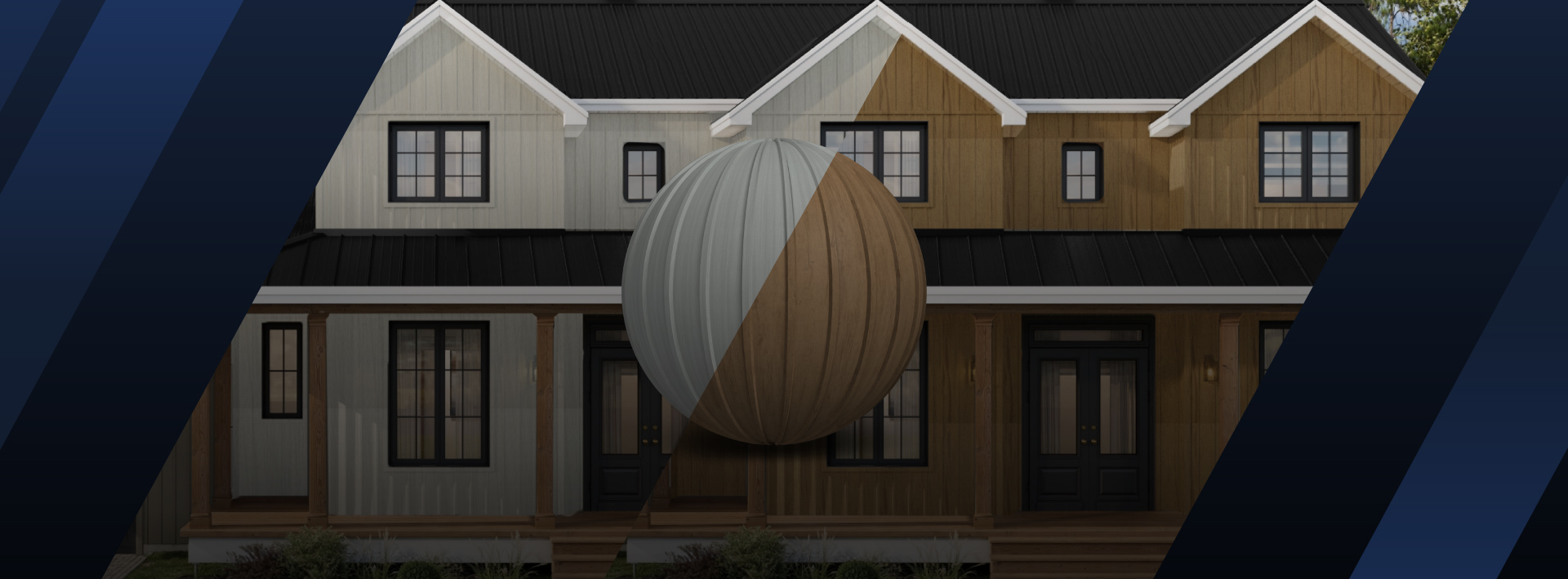Wood attracts the eye, and metal offers reassurance. When the two unite, the blended effect is remarkable. With the arrival of the newest printed wood colours White Oak (code QC-PR105) and Knotty Oak (code QC-PR100) in our metal siding selection, a whole new palette of architectural possibility has become available.
Designed to blend with a variety of materials, these wood finishes offer a solution that is both aesthetically pleasing and sustainable for projects that require more than the strict minimum. Here’s why it could make a big difference for future worksites.
Stunning realism that enhances architecture
Thanks to high-tech printing technology, our wood finishes are created with stunning realism reflecting the grains, shades and textures of natural wood without any of the inconveniences it presents. This attention to detail transforms every sheet of metal siding into an architectural element of its own, bringing warmth and nobility to contemporary lines or more classical projects.
In harmony with other types of materials
One major benefit of our metal siding and our wood prints is the facility with which they blend with other types of materials such as stone, cement, natural wood or engineered wood. Whether you wish to create a subtle contrast or perfect harmony, our wooden shades will complete your building facades and outdoor installations perfectly while highlighting all the other surrounding materials.
- Rough concrete for an industrial-chic look,
- Natural stone for organic harmony,
- Blackened steel or glass for a decidedly modern touch.
The look of wood, without the compromise
Forget about annual treatments, uneven discoloration and deformation due to humidity. The wooden print metal siding continues looking like new for years, even in the harshest weather conditions. Resistant to corrosion, UV rays and winter exposure, it is a marriage of extreme durability and minimal maintenance. What a perfect combination for Quebec worksites!
A response to the growing demand for natural authenticity
Wood is not simply a material. It is a visual signal of comfort, eco-sustainability and humanity in architecture. You can have all this and more while also receiving the performance of steel. It is our answer to the growing trend for a return to what is essential, without compromising on technological excellence.
A competitive advantage for your projects
In a market where every detail counts, these new colours will allow you to stand out from first glance. Whether it is to embellish the facade of a home, enrich the appearance of a commercial building or refine an apartment building, this type of siding is sure to impress.
In summary, this is why you should choose wood print metallic siding
- Natural aesthetic: benefit from the warmth of wood without all the inconveniences that come will real wood.
- Flexibility: our wood prints blend perfectly with all other materials.
- Durability: our products are designed to resist even the harshest weather conditions that we find in Quebec.
- Easy maintenance: unlike wood, metal siding requires little upkeep and preserves its youthful appearance for a long time.
These new printed wood colours offer creative leverage and added value for your projects. They offer the freedom to design distinctive architectural features that provide warmth and durability that are sure to please even the most discerning clients.
Would you like to see these options with your own eyes? Order colour samples today.
For experienced advice concerning wall and roof siding options, reach out to our team of advisors.
Tôle Vigneault
1.888.428.9921
info@tolevigneault.com





